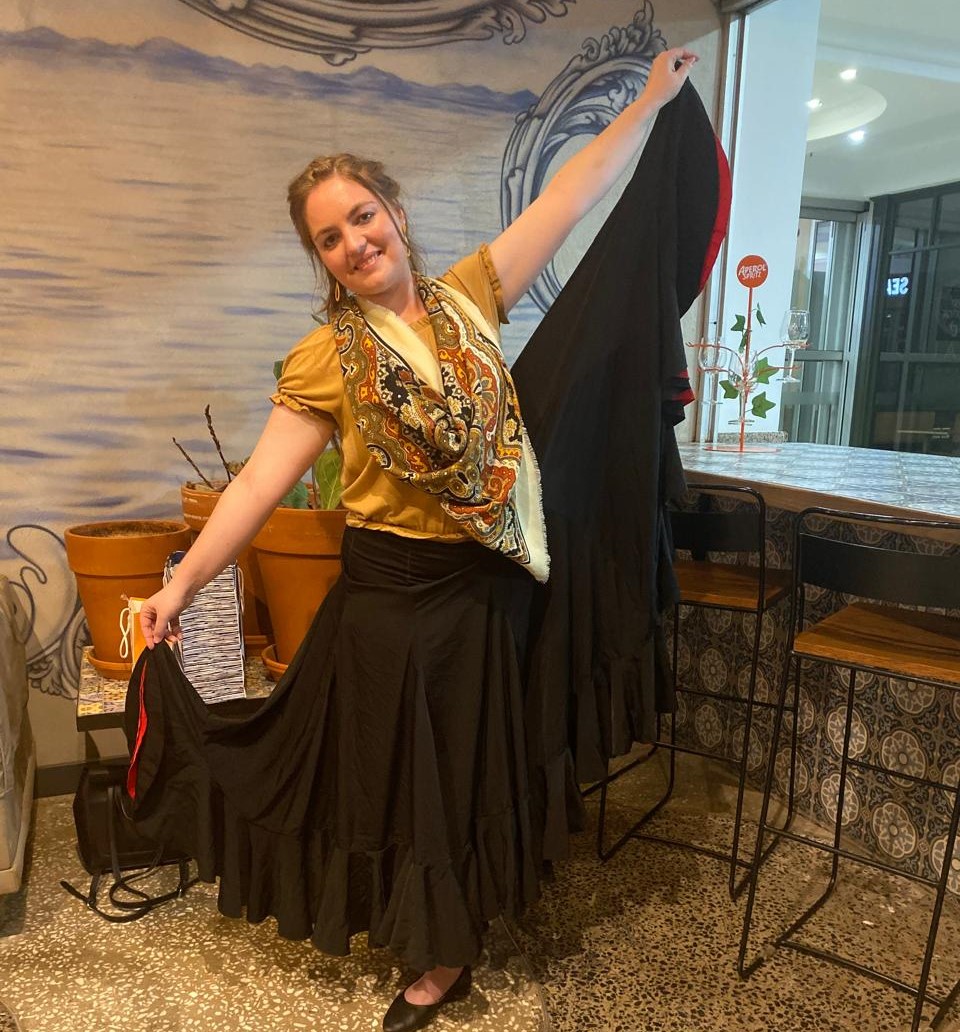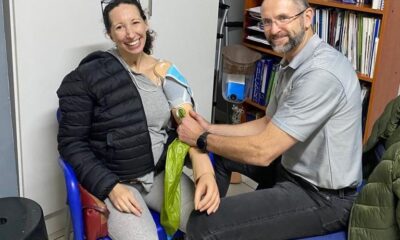
Featured Item

Instructor brings Jews in step with Israeli dance
From a young age, Christel Kamffer was captivated by the art of dance. The 32-year-old Afrikaans-speaking Christian woman from Pretoria initially pursued dance as a personal passion, but what began as a hobby soon blossomed into a calling that led her down an unexpected path.
At 15, Kamffer discovered Israeli folk dance, sparking a connection to a tradition that would shape her future. Today, she’s one of South Africa’s few Israeli folk dance instructors, dedicated to igniting interest in this vibrant tradition, particularly within the Jewish community.
Her journey into Israeli folk dance took a pivotal turn in 2012, when Miriam Jacobs, a respected local instructor, invited Marcelo Marianoff, a Jewish Israeli dance teacher from Argentina, to South Africa to host Machol Jozi, a workshop in Israeli folk dance.
“Marcelo didn’t just teach us the steps, he brought the history, the music, the culture. Every part of it spoke to my soul,” Kamffer recalls. The experience was life-changing, inspiring her to deepen her connection to the art form and even volunteer on a kibbutz in Israel to learn more about the culture firsthand.
Despite Kamffer’s enthusiasm, Israeli folk dance has struggled to gain a strong foothold in South Africa, particularly within the Jewish community. “It’s been almost non-existent here,” says Jacobs, who hopes that a new generation will rekindle the community’s interest in the dance’s spiritual, cultural, and joyous offerings.
Jacobs, who moved to South Africa from Haifa 33 years ago, is no stranger to the challenges of promoting Israeli folk dance in this country. “I brought Marcelo here at my own expense,” she says, having spent more than 20 years dedicated to the dance form only to face limited support from the local Jewish community.
For years, Jacobs has tried to engage Jewish religious organisations, schools, and synagogues with little success. “Our schools offer ballet, but not Israeli dance,” she notes, pointing out that most invitations to teach and perform come from Christian communities in support of Israel.
Celia le Roux, 69, another local instructor who attended Machol workshops in England, Vienna, and France, went on to teach small groups of Christian women in Cape Town and Hermanus. Like Jacobs, Le Roux is disheartened by the lack of participation from the Jewish community despite its global popularity and spiritual significance. “It’s disappointing how few Jewish people come to dance,” she said.
Jacobs attributes the lack of interest from the community to resistance, particularly to the practice of mixed-gender dancing. “In Israel, I taught both secular and religious communities, adjusting my approach by teaching men and women separately,” she said. She also notes that many women in Johannesburg are discouraged from attending evening classes due to safety concerns.
South African Zionist Federation spokesperson Rolene Marks believes it’s unpopular for another reason – lack of exposure. “South African Jews haven’t shown much interest in Israeli dancing primarily due to limited exposure,” she said. “Without dedicated academies, the dance might not carry the ‘cool factor’ necessary to attract young enthusiasts.”
Jacobs, however, said she’s hoping younger instructors like Kamffer will help bring Israeli folk dance into the mainstream because “it’s time to hand over the baton to the next generation”.
Kamffer is determined to change the narrative. Her time on Kibbutz Ein Hashofet, where she met Helen Arbel, a revered Israeli folk dance teacher, solidified her passion for the dance. Arbel taught Kamffer about the significance of Shavuot, a Jewish holiday celebrated with dance on the kibbutz, an experience Kamffer describes as life-changing.
“In 2020, during the global lockdown, I had the privilege of dancing with kibbutz residents on Shavuot,” she said. “It felt like I was part of something far greater than myself, and it deepened my desire to keep the tradition alive.”
Kamffer’s connection to Israeli folk dance also grew as she learned about its origins in the kibbutzim back in 1944, when it was created to help establish Israel’s national and cultural identity. A rich history, combined with the communal and joyous nature of the dances, resonated with Kamffer on a personal level. “Like Ruth in the Bible, I’ve adopted a culture and people that are not naturally my own,” she reflects.
Kamffer’s commitment to the art form remains unwavering. In 2023, she became the first South African to complete the online International Markidim Course, a folk dance teacher’s course from Israel.
“The lack of support here can be overcome by educating our community about the rich spiritual and cultural history of Israeli folk dance,” Kamffer said. “It’s not just about learning the steps, it’s about building community, celebrating life, and connecting with one’s heritage. It’s also about improving health and fitness and bringing joy to people of all ages.”
Kamffer’s vision is to found the Hatikvah Dance Academy, a school dedicated to promoting Israeli folk dance. “I want to bring Israeli dance to Jewish schools in Johannesburg, where it’s currently not offered as an extracurricular activity,” she says. “Cultural dance is for everyone, but it has to start with children.”
Her dream is to offer classes for all ages within the Jewish community. “We need to create spaces where everyone feels welcome, regardless of their level of experience,” she said.
While Kamffer’s journey is unconventional in being a Christian woman teaching a Jewish cultural tradition, her passion for preserving Israeli folk dance is undeniable. As she continues working tirelessly to reintroduce this dance form to the South African Jewish community, there’s hope that Israeli folk dance will once again find its place in the hearts of those who have lost touch with it.
“The beauty of Israeli folk dance is that it’s more than just movement,” says Kamffer. “It’s a celebration of community, identity, and life. It has the power to bring people together.”
With Kamffer’s unwavering dedication, there’s optimism that Israeli folk dance can be brought to life and possibly even thrive as part of South African Jewish life, uniting generations through rhythm, joy, and a shared heritage.







Jennifer Tannahill
February 1, 2025 at 4:00 pm
Are these Israeli dance classes taught in Hermanus?